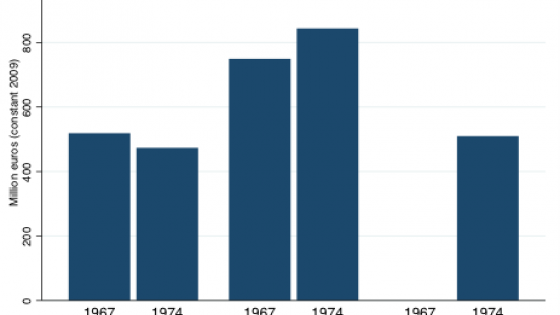Advertisers’ reluctance to feature their products and services alongside sensitive news items has alarming implications for editorial freedom. Advertising ‘block lists’ could weaken media appetite to cover hard-hitting events, and potentially water down the news agenda, as online publishers and platforms chase ad-generated revenue. Companies use block lists of subjects or words to prevent their brands appearing beside news they deem unpalatable – terrorism or sex, for instance.
But critics say these lists are a blunt tool with an unintended consequence: preventing ads from appearing next to highly popular items, making fearful brands miss out on exposure. Previous research reveals that news media outlets tweak their content to suit advertisers’ preferences to avoid upsetting businesses (Beattie 2020, Beattie et al. 2021).
This practice became more evident during the early days of the pandemic, when Covid-19 dominated the news. During spring 2020, individuals were spending enormous amounts of time online, and visits to online media sites soared by 50% (ComScore 2020). Yet after two decades of growth, advertising revenues that spring fell by 23–35% (Statista 2023).
Why the substantial fall in ad earnings?
This drop can’t be explained by the economic turmoil of the pandemic alone. Shrinking spending on advertising was also a result of commercial fears that brands would somehow acquire negative associations linked to the ‘hard’ news of the day.
With a novel field experiment, we’ve leveraged recent advances in eye-tracking technology to show that the fear fuelling block lists is misplaced. We do not address block lists applied to pornographic or terrorist content, but have focused solely on advertisers’ willingness to feature products alongside ‘hard’ and ‘soft’ news.
Previous research has examined how time spent on a webpage where an ad is displayed affects participants’ recall of the advertised brands (Danaher and Mullarkey 2003, Goldstein et al. 2011, 2015, Uhl et al. 2020). We are the first to show directly – rather than deduce – how people’s gaze flitted to and lingered on the ads, and link this to the accompanying content. New eye-tracking technology has made this possible, as it can measure readers’ habits in a natural rather than lab environment. To our knowledge, we are the first to link the impact of news content on advertising in this way, and revisit the myth that hard news hurts brands.
In our recent paper (Simonov et al. 2023), we show that not only do readers pay more attention to ads that feature alongside more captivating articles; we also show that ads placed beside captivating articles were more effective in inducing purchases.
How did we do this?
Using technology provided by Lumen Research, which processes high-resolution images to calculate an individual’s gaze and eye movements, we were able to gauge precisely how long people spent reading selected articles, and how much attention they paid to the ads displayed alongside those articles (see Figure 1). Previous eye-tracking studies have required expensive lab equipment. In our experiment, the setup mimicked everyday experiences of reading news online, on both desktop and mobile devices.
Figure 1 Example of the heat map
Note: Red/Orange colour means higher gaze probability
To do this, we recruited more than 1000 subjects from the UK and US and asked them to read a selection of nine recent articles – a mix of hard news (such as coverage of the Covid-19 pandemic and the racial justice protests of summer 2020) and soft news (largely celebrities, entertainment, and lifestyle). We sourced pieces from both left and right leaning papers – The Guardian and The Daily Mail in the UK; The New York Times and USA Today in the US. Ads featured recognisable brands tailored to each country – from Costa to Dunkin’ Donuts, and H&M to the GAP – and appeared at random alongside articles. Participants were unaware at the time of the experiment which outcomes we were measuring.
Results
Our experiment allowed us to measure how engaged readers were in the article, and how much time they looked at the ads as a result. Our main finding – that ads are just as effective whether they sit alongside hard or soft news, and that engaging content generates attention to ads and influences subsequent purchase decisions regardless of its subject – challenges the rationale of block lists.
Individuals were offered a choice between cash or a voucher for one of the advertised brands, allowing us to gauge changes in willingness to pay for the brand in response to ad exposure. This revealed a clear link: the more attention readers paid to advertising, the more likely they were to remember and then buy that brand, regardless of whether the ad had appeared alongside hard news. On average, every 2.76 seconds of attention paid to an ad increased the probability of purchase by about 2%. Thus, we proved that advertising alongside hard news has no discernible impact on an individual’s decision to buy that brand as a result, once we controlled for the amount of time individuals spend looking at an article. In other words, what matters is how engaging the article is, not whether or not it is hard news.
Implications
If we can debunk the rationale for the widespread use of block lists, this could help media outlets resist pressure from advertisers and continue to report on hard hitting subjects.
This conclusion also casts doubt on the value of clickbait-style headlines. Received wisdom has it that once readers are lured towards what proves to be a flimsy story, they may focus more on an ad in the absence of engaging content. But our research suggests this isn’t so – the less captivating the story, the less engaged a reader will be in any accompanying ad.
We have also validated a method for assessing ad effectiveness that is able to measure whether a reader is paying attention rather than simply leaving a webpage open, and a new means for assessing whether this translates to real-world decisions.
Limitations
Our results could overestimate the effectiveness of ads on purchases – participants were asked to make an immediate purchase decision, whereas in reality individuals may only have the opportunity to purchase a product some time after seeing the ad.
On the other hand, these ads weren’t tailored to our readers’ preferences. Software that targets content and ads according to individual consumer tastes could in fact boost the impact of ads, meaning we might be underestimating their effectiveness.
We also note that individuals spent slightly less overall time reading hard news – but we calculated that this was easily offset by the more powerful impact of the accompanying ads. This shorter attention may have been prompted by a saturation of news around Covid-19, rather than a reflection on appetites for hard news.
Future
Establishing a robust method to quantify digital attention with precision has opened the door to new lines of investigation.
We need a better grasp of how political beliefs impact individuals’ preference for content, and vice versa. Only at the end of our experiment did we ask participants about their political leanings, and results revealed that they prefer content that suits their politics. Guardian readers didn’t stay long with Daily Mail articles, for instance.
Now that technology could allow platforms to track readers’ attention, does this hand them uncomfortable levels of power? In our case, we were measuring the ‘spillover’ attention that news content directed toward ads. But could this spillover be harnessed instead by more sinister material, such as propaganda and other radical political content, fuelling the recent ascent of populist parties (e.g. Danieli et al. 2023)? Some authoritarian countries are investing in entertainment and bundling it with propaganda, suggesting that such spillovers are already exploited (e.g. Simonov and Rao 2022). Platforms have great power over what readers consume. What impact could this power have on readers’ opinions – and more widely, on democracies?
References
Beattie, G (2020), “Advertising and media capture: The case of climate change”, Journal of Public Economics 188, 104219.
Beattie, G, R Durante, B Knight and A Sen (2021), “Advertising spending and media bias: Evidence from news coverage of car safety recalls”, Management Science 67(2): 698–719.
Weitman, B and I Essling (2020), “Revisited: Media consumption during the coronavirus pandemic”, ComScore, accessed 2 May 2023.
Danaher, P J and G W Mullarkey (2003), “Factors affecting online advertising recall: A study of students”, Journal of Advertising Research 43(3): 252–267
Danieli, O, N Gidron, S Kikuchi and R Levy (2023), “Decomposing the rise of the populist radical right: How changes in priorities explain the electoral politics of our time”, VoxEU.org, 29 April.
Goldstein, D G, R P McAfee and S Suri (2015), “Improving the effectiveness of timebased display advertising”, ACM Transactions on Economics and Computation (TEAC) 3(2): 1–20.
Uhl, C, N A Nabout and K Miller (2020), “How much ad viewability is enough? The effect of display ad viewability on advertising effectiveness”, arXiv preprint arXiv:2008.12132.
Simonov, A and J Rao (2022), “Demand for Online News under Government Control: Evidence from Russia”, Journal of Political Economy 130(2): 259–309.
Simonov, A, T M Valletti and A Veiga (2023), “Attention Spillovers from News to Ads: Evidence from an Eye-Tracking Experiment”, CEPR Discussion Paper 17956.
Statista (2023), “Online advertising revenue in the united states from 2000 to 2021”, accessed 2 May.







